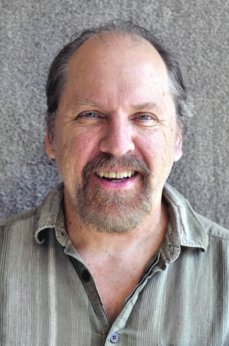Growing up with a father for an artist, he was exposed to the art scene early and followed the same creative footsteps. Grudt, 60, learned how to paint, draw, print and woodwork. Now the director of Keys to Creativity in the Lansing Mall, the Lansing local also teaches art in the gallery he runs. The creative process of running an art gallery, developing a painting and teaching is mostly the same, he said.
It’s all about being creative, planning ahead and expecting it to end up different.
“You have an idea of what it’s going to be, which may be 85 percent right, but it changes because that’s the nature of the beast,” Grudt said. “The colors you’re going to use may not end up being the colors, and the distances you expected may need to be reworked. Running a gallery is similar to that. That creative work you have to put into both are the same.”
How did you find your passion for art?
As a kid, I was always interested in art and my parents helped promote it. It’s something I’ve always been excited about, and my wife being an artist also helps because we’re like-minded. I worked in various different modes of artistic venture, like with the Michigan Shakespeare Theatre working on sets, which was a whole different thing than learning to paint with a six-foot stick. I became involved in printmaking for a few years and then gave it all up for a while.
Then the Keys to Creativity found me. It just happened to fall into my lap after the Keys to the City project happened, but it wasn’t anything I was expecting to do. It wasn’t intentional. But once I had the galleries, I thought that with the studios available to me in the back, I was going to do a lot more work. That wasn’t the reality of the situation because running a gallery can be more than 60 hours a week. It’s a lot of work.
What was the inspiration for your cover piece, “There is Something Just to the Left of the Thing on the Right”?
While a lot of artists like to work small, like under 2 feet, it’s so much easier to work bigger. The piece is 3x6, and I enjoy working with that size because you can do so much more with it. It presents its own set of issues, especially when it comes to acrylics because it dries so quickly compared to oil that you could come back a week later and just keep working on it. There’s a form of acrylic called ‘acrylic flow,’ where they take acrylic paint mixed with other chemicals in several cups that are poured on to the canvas. They end up flowing together. It’s really cool. I used the same type of paint, but while that can be a glorious mistake, this I was wondering how to control the flow and paint. It’s all paints, with some blending together while others didn’t. I was curious how you could use that medium with intent as opposed to just letting the paint do whatever it wants to do. I’m happy with it and want to work on more. It’s one of those kinds of projects you start at 9 p.m. and finish at 5 a.m.
You have to keep going with it. They are large projects that take time to do. These sizes take about 14 to 18 hours to do. By the end of most projects, you know that your back is not happy with you.
What was the process of creating “There is Something Just to the Left of the Thing on the Right”? Did you have any challenges?
It’s an almost black background — a super deep purple, really. I knew I wanted to start with an organic paisley feel to it, so I started with that in the middle and built off it. That developed as it did. I didn’t have a lot of control of it, so I stepped back to see how I could hold it together. It’s mostly all dots, which I’m interested in. Pointillism is interesting because you can see how the colors blend together from a distance. The quality of the piece changes depending on how far you are from it. I want to understand how to use this medium in a different way that’s not as conventional. It’s a really interesting way the paint flows, and I don’t think I used a brush in that piece. I put all the paint in plastic bottles and cut the tops in different sizes. Big bottles hold a lot of paint, but the little bottles you better not fall in love with the color because you’re going to run out of it, and it’s hard to re-mix the paint to become the same. There’s a constant asking yourself how much of the paint you have to use, and how strong the color needs to be in it. It’s fun and I like how it can work in a black background compared to a traditional white background.
Support City Pulse - Donate Today!
Comments
No comments on this item Please log in to comment by clicking here